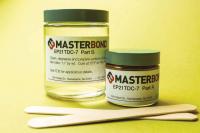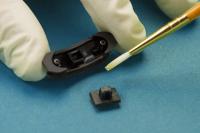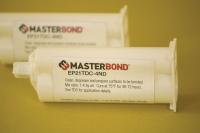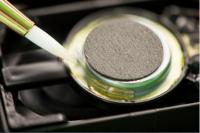
Master Bond has developed a comprehensive line of adhesives to bond rubbers to each other as well as to metals, plastics, ceramics and glass. These bonding compounds offer enhanced performance properties and easy application. They consist of high, low, medium viscosity cyanoacrylate, epoxy, silicone and light curing formulations. Frequently these adhesives replace mechanical fasteners, ultrasonic welding and solvent bonding techniques.
Advanced Bonding Capabilities of Master Bond’s Rubber Bonding Adhesives
Specific rubber bonding products adhere to a number of different rubbers, including:
Additional elastomers include butyl rubber, EPDM, fluorosilicone, silicone RTV, polysulfide rubber and polybutadiene.
Advantages of Using Master Bond’s Rubber Bonding Adhesives, Sealants and Coatings
Generally, bonding rubber surfaces requires time consuming surface preparation that depends upon expensive and hazardous materials. Specific Master Bond epoxy formulations can be applied in rubber bonding applications without the need for any surface preparation. Using Master bond's rubber bonding adhesives will:
- Save you time
- Reduce your production costs
- Eliminate the need for corrosive and dangerous materials
Our compounds are presently employed in industries ranging from automotive, medical and electronic to oil/chemical processing, aerospace and optical.
Elastomeric bonded assemblies offer outstanding durability/resiliency, fatigue resistance, strength, thermal stability and chemical inertness. Select grades withstand exposure to hydrocarbons, chlorinated solvents, lubricating oils, hydraulic fluids. Diverse types of elastomers containing a variety of fillers/additives have been effectively joined using Master Bond adhesives that meet application specific requirements. Special consideration should be given to joint type, shape/configuration, loads and operating conditions. Coefficient of thermal expansion between rubber and rigid substrates is of particular concern for bond longevity under aggressive conditions. Other important criteria in the adhesive selection process is joint integrity under shear, tensile, compressive, peel, cleavage stresses. Systems can be automatically dispensed and are engineered to ensure reliable, consistent, safe, cost effective solution, even for irregular bond lines.
Most Popular Rubber Bonding Systems
 |
MB297 Higher viscosity (2,200-2,400 cps) and a slightly longer open time than low viscosity counterparts. High strength, rapid curing ethyl cyanoacrylate system. No heating or mixing needed. Good resistance to cleaning agents. Serviceable from -60°F to +250°F. |
 |
EP21TDC-4 Two part, room temperature curing epoxy with outstanding flexibility and superb adhesion to many rubbers and metals. Excellent thermal cycling properties. Ability to withstand mechanical shock and vibration. T-peel strength 25-35 pli. Elongatio >200%. Water and chemical resistant. Operating temperature range -100°F to +250°F. |
 |
EP21TDC-7 High peel strength, room temperature curing epoxy. Has an elongation over 300%. Low temperature serviceability. Adheres well t natural rubber, neoprene, nitrile, SBR without surface preparation. Serviceable from -100°F to +250°F. Excellent resistance to thermal shock. T-peel strength > 40 pli. Can cure underwater. |
 |
X-5 High performance single component compound with excellent chemical resistance properties. Superb electrical insulator. Rapid set time. Bonds well to similar and dissimilar substrates. Excellent shear and peel strength. Outstanding durability. Serviceable from -75 to +275°F. |
 |
EP21TDC-4ND Smooth paste epoxy adhesive. High flexibility. Elongatio >200%. Impressive resistance to mechanical vibration and shock. Outstanding adhesion to rubbers such as SBR, nitrile, neoprene. T-peel strength >30 pli. Serviceable from -100°F to +250°F. |
 |
EP72M4 Tough, resilient, room temperature curing epoxy adhesive. Resists exposure to vibration, impact and shock. Superior peel and shear strength. |
 |
EP51FL-1ND-2 Flexible epoxy adhesive has rapid set up time and cure speed. High peel strength and elongation. Withstands mechanical shock and vibration. Resists thermal cycling. Superb electrical insulation properties. Service operating temperature range from -100°F to +250°F. |
